Physical Address
304 North Cardinal St.
Dorchester Center, MA 02124
Physical Address
304 North Cardinal St.
Dorchester Center, MA 02124
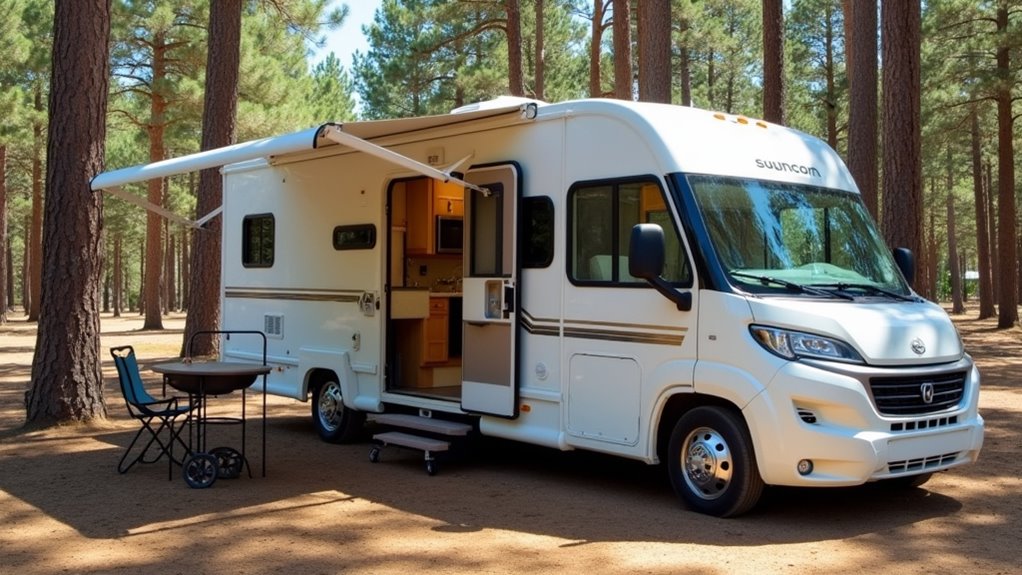
Unlock the secrets to successful RV living with expert tips on choosing, budgeting, and transitioning to life on wheels.
If you’re considering RV living as your next adventure, you’ll need more than just wanderlust to make it work. From choosing between a cozy Class B van or a spacious Class C motorhome to calculating monthly campground fees, the journey begins well before you hit the road. You’ve got big decisions ahead—but don’t worry. Whether you’re looking to save money or embrace nomadic freedom, there’s a clear path to turning your RV dreams into reality.
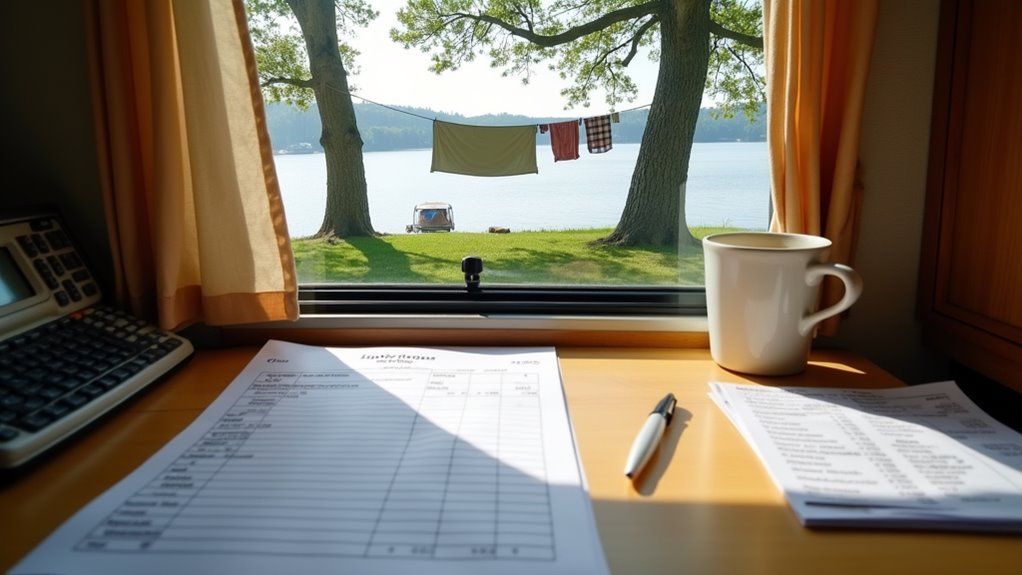
When planning to live in a rented RV, understanding your monthly budget is essential for long-term success.
You’ll need to plan for costs ranging from $1,000 to $4,000 monthly, depending on your lifestyle choices and travel frequency.
Your biggest expenses will include campground fees ($10-$100 per night), fuel, insurance, and regular maintenance.
Major RV living costs include nightly campground fees, ongoing fuel expenses, insurance coverage, and essential maintenance to keep your home-on-wheels running smoothly.
Looking for budget-friendly RV rentals can significantly reduce your initial costs and help you stay within your financial goals.
Don’t forget to factor in essential monthly bills like cell phone service, internet connectivity, and groceries.
If you’re traveling with pets or children, you’ll need to budget for their specific needs too.
Set aside money for unexpected repairs and emergencies, as RV living can bring surprise expenses.
Your costs will vary by season and location, so maintain flexibility in your budget.
Consider joining camping memberships to reduce your overall expenses, especially if you’re planning extended stays at campgrounds. For long-term stays, many full-time RVers spend an average of about $24 per night when calculated over several years.
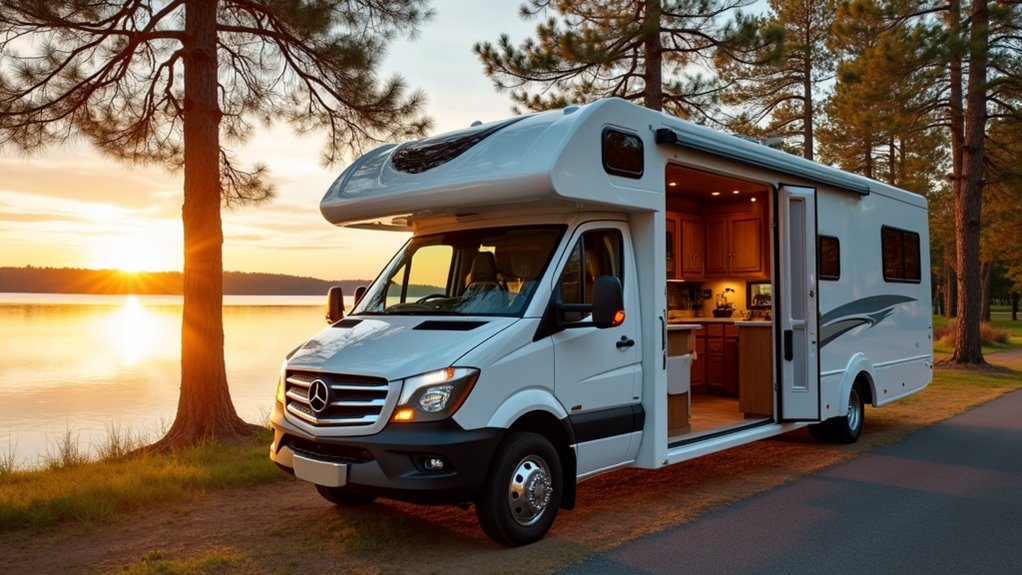
Selecting the right RV type is essential for your long-term living success. If you’re traveling solo or as a couple, consider a Class B camper van for its fuel efficiency and easy maneuverability. Consider your intended camping destinations carefully, as larger RV sizes may restrict access to many national parks and scenic locations.
For families needing more space, fifth wheels offer multiple bedrooms and residential amenities, though you’ll need a heavy-duty truck to tow them. Understanding the pros and cons of each RV type will help you make an informed decision for your lifestyle.
Travel trailers provide an excellent middle ground, combining affordability with versatile floor plans. They’re detachable for local excursions, but you’ll need a capable tow vehicle.
If you want luxury and don’t mind higher costs, Class A motorhomes deliver premium comfort and extensive storage. Class C motorhomes strike a balance between drivability and living space, making them popular for families who want the convenience of an all-in-one vehicle without the size of a Class A.
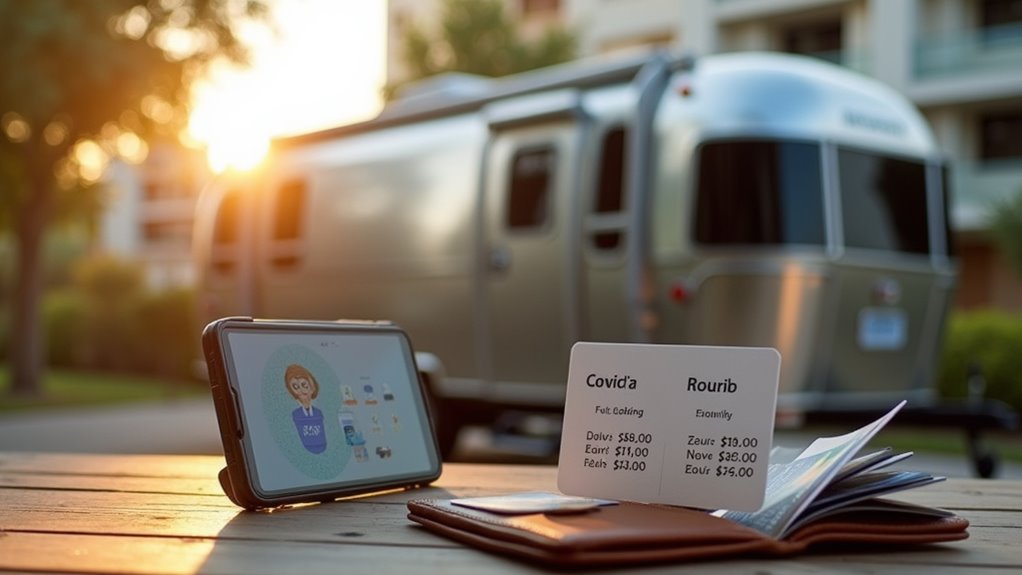
To find the right RV rental for long-term living, you’ll need to explore several established platforms that cater to different needs and budgets.
Outdoorsy and RVshare lead the market with extensive vehicle selections and thorough insurance coverage, while RVnGO offers competitive nightly rates with potential savings up to 40%. Both peer to peer platforms connect RV owners directly with renters for a more personalized experience.
For extended stays, consider RV Rental Housing, which specializes in temporary living arrangements with flexible terms from 30 days to 6 months. The Columbus area offers numerous pet-friendly motorhomes perfect for long-term rentals with your furry companions.
You’ll typically pay between $100-250 per night for a Class C RV that sleeps 6-8 people, while Class B options cost less and work well for couples.
Many platforms offer delivery services to your desired location, eliminating the need for towing experience.
Look for weekly rental discounts to reduce your overall costs.
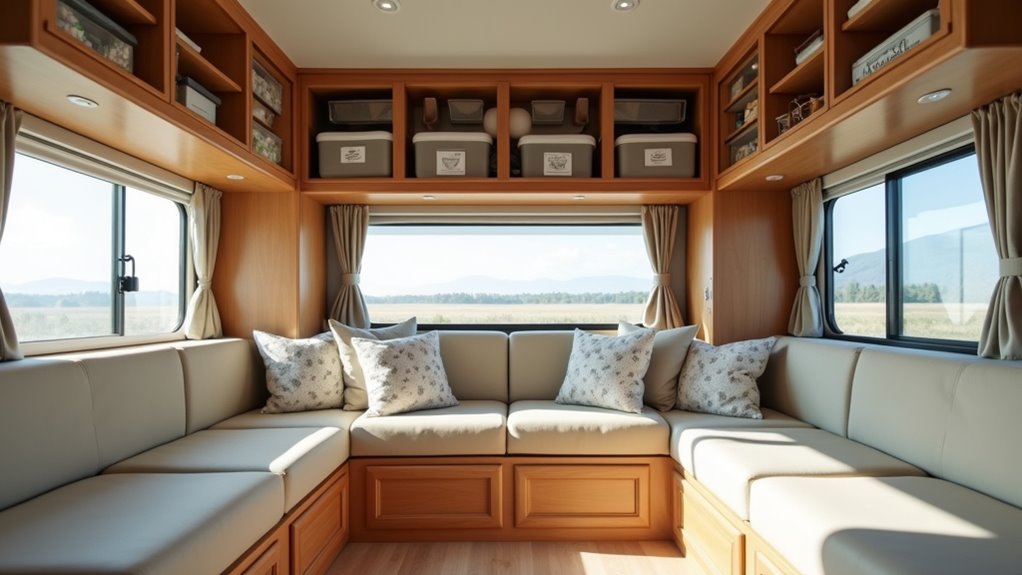
Planning your RV’s living space requires four key considerations: floor plan selection, storage optimization, space-saving design, and outdoor living options.
Choose a floor plan that matches your lifestyle – front living designs offer traditional separation, while rear living layouts maximize natural views. Higher ceilings in front living designs provide an airier, more spacious feel.
You’ll want to maximize every inch of space with under-bed storage, overhead cabinets, and strategic shelving solutions. Install fold-out furniture and pull-out counters to create multifunctional areas that adapt to your needs. Consider implementing vertical storage solutions to make the most of wall space while keeping necessities easily accessible.
Don’t forget to expand your living space outdoors. An awning, portable grill, and comfortable patio furniture can effectively double your usable area.
When selecting your layout, consider your travel party size, time spent inside, and must-have amenities. Remember to balance your desired features with your budget constraints.
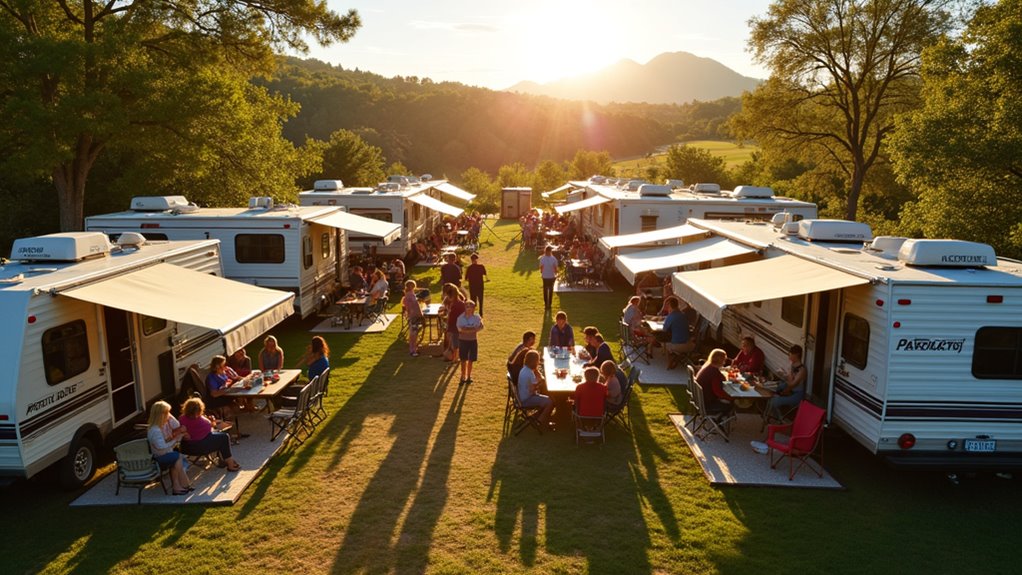
While living in an RV offers incredible freedom, building a strong support network becomes essential for long-term success on the road.
The freedom of RV life is liberating, but a solid community of fellow travelers transforms the journey from solitary to sustainable.
You’ll find numerous ways to connect with fellow RVers both online and in person. Start by joining RV-specific platforms like RVillage and Escapees RV Club, where you can participate in discussions and virtual events. Setting up extra chairs outside your RV is a welcoming gesture that naturally encourages social interactions. Consider starting a rental business network to connect with other RV owners who can share tips and experiences.
Don’t overlook local connections at RV parks and campgrounds. You’ll meet other travelers by attending community gatherings, joining local clubs, and participating in volunteer opportunities.
Make use of specialized services like Full-Time Families if you’re traveling with kids, or connect through the Good Sam Community for valuable advice and friendships.
Remember to maintain these relationships through regular communication, scheduled meetups, and shared experiences with the friends you make along your journey.
While you might worry that living in a rented RV means cramped, uncomfortable spaces, today’s modern RVs offer surprisingly cozy homes on wheels. You’ll find smart storage solutions, comfortable sleeping areas, and even full kitchens at your fingertips. By following this guide’s steps for budgeting, choosing the right RV, and connecting with fellow travelers, you’re ready to start your mobile living adventure with confidence.